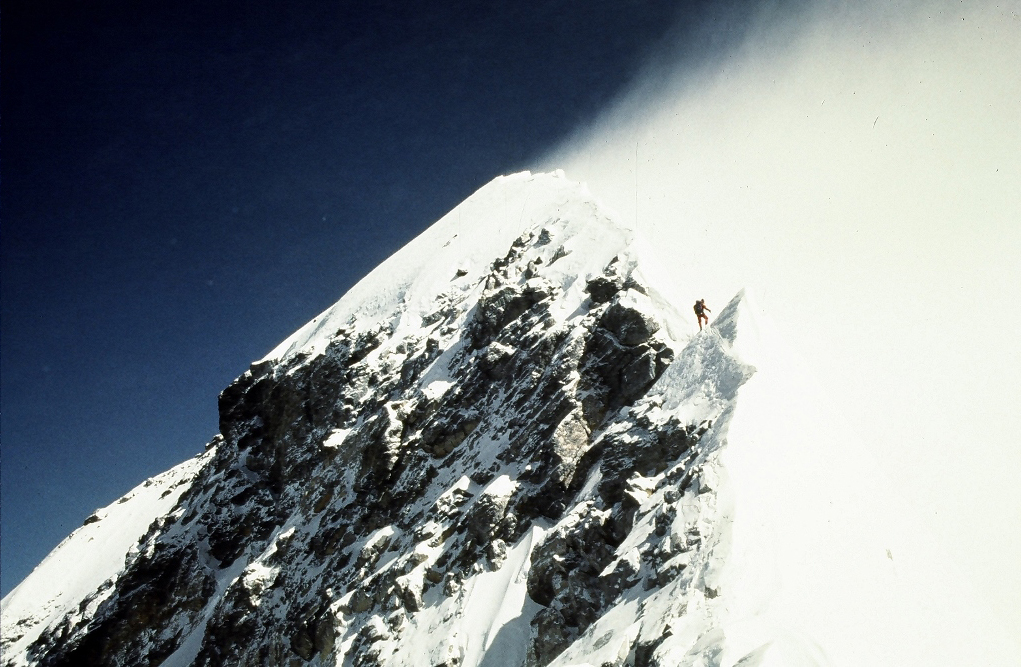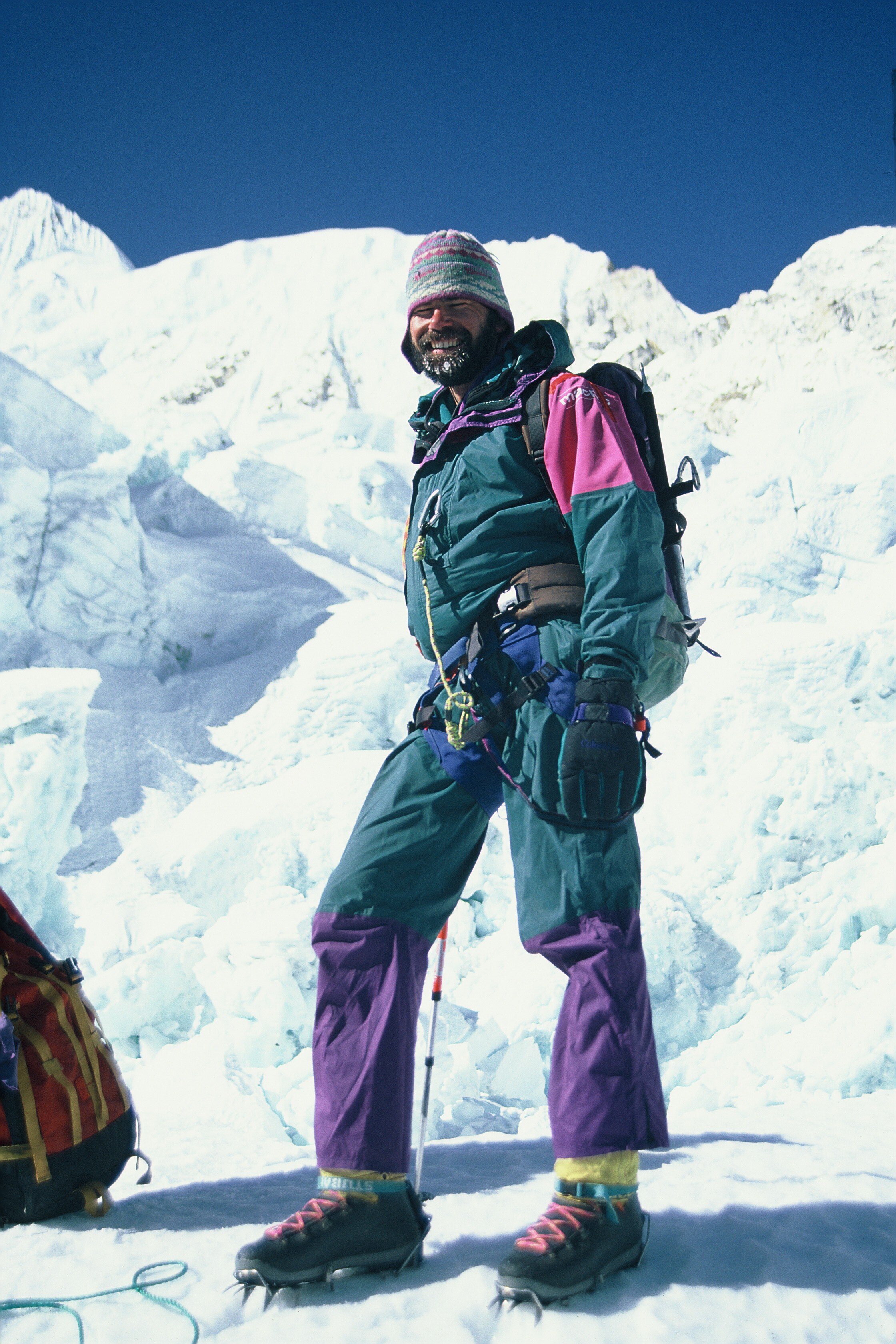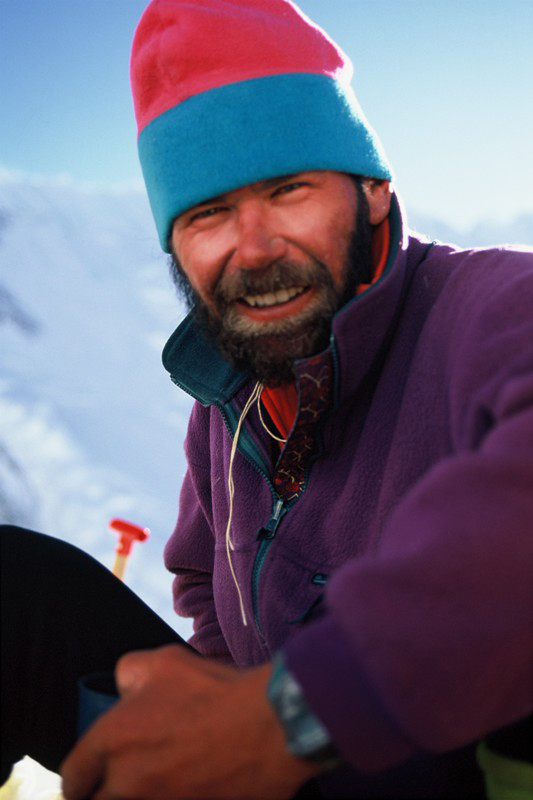With neither Viesturs nor Cotter available in 1996 Rob employed Australian climber Mike Groom and NZ guide Andy Harris to work alongside him on the mountain that year.
Six climbers and two Sherpas reached the summit on May 10th but a severe storm engulfed the climbers on the mountain as they were descending. Rob tried in vain to assist an exhausted client, Doug Hansen, down the Hillary step in ferocious weather and approaching darkness. By evening, Rob was no longer capable of descending himself and remained on the south summit for two nights in the open. Attempts at rescue from below were thwarted by high winds and exhausted rescuers.
Andy Harris disappeared high on the mountain and was last seen climbing back up to the south summit to render assistance to Rob and his client. Andy tried desperately to save Rob but never made it back to south col. Meanwhile another struggle for survival was occurring 850 metres lower down the mountain on South Col.
Members from both Rob Hall's team and Scott Fischer's Mountain Madness team had descended through the storm but had not located the tents on the wide expanse of South Col. Huddled together they were sharing their remaining warmth in an effort to ride out the storm and await better visibility with which to locate their respective camps. Very late in the night Russian climber Anatoli Boukreev, a guide for Mountain Madness, came out and rescued the three remaining Mountain Madness clients from the storm but concluded that Rob Hall's clients, Beck Weathers and Yasuko Namba, were already deceased.
In what was later described as a miracle, Beck Weathers managed to revive himself and make his way back to the tent the following day and move into a tent. One day later he was escorted down the mountain by a rescue team that was made up of climbers from other expeditions that had come to the assistance of the stricken climbers. Beck Weathers was to survive but the final toll taken by the storm saw the loss of the two guides and two clients.
In the region at the time running an expedition to Pumori, Guy Cotter had been in radio contact with Rob Hall through the summit day. He quickly recognised the strife his friend was in and the following morning hiked the short distance to Everest Base Camp to offer what assistance he could to the team.
Coordinating as best he could from base camp, Guy tried in vain to arrange for Rob's rescue and the rescue of the survivors on South Col.
As the last survivors descended the mountain, it was apparent the efforts of the rescue had taken its toll on everyone on the mountain and there was simply not enough able bodied manpower to bring the survivors down the complicated and broken Khumbu icefall back into base.
Guy made contact with Lisa Choegyal in Kathmandu with a request to secure a helicopter to collect the injured from the top of the icefall at 6000m. Lisa, an expat Brit who had been living in Nepal for more than 20 years, was well connected and managed to secure the support of the Nepalese military who flew a mission to collect Beck Weathers and Taiwanese climber Makalu Gau from the very top of the icefall in what was heralded to be one of the most daring rescues ever conducted in Nepal.
The fall-out from the tragedy was understandably immense. The world media was infatuated by the tragic events and many books were written on the subject.
For the high altitude guiding fraternity it highlighted many a shortcoming in the processes that were standard operating procedures at the time. The tragedy signalled a need for the industry to mature and much of that maturing came about in the aftermath of the events of May 10-12 1996.
Importantly, the competing commercial guiding operators came together and rendered their mutual support by shelving their own climbing plans to facilitate the rescue missions on the mountain throughout that event in ’96. The effort put in by guiding and Sherpa staff from teams other than those directly affected was phenomenal and not without personal expense of energy and resources. Their efforts will always be remembered and appreciated by those who survived and the families of those affected by loss. Highlighting the advantages of working together to share workload and support other operators when the chips are down ensures the whole industry now benefits through sharing of resources and information when in need.



